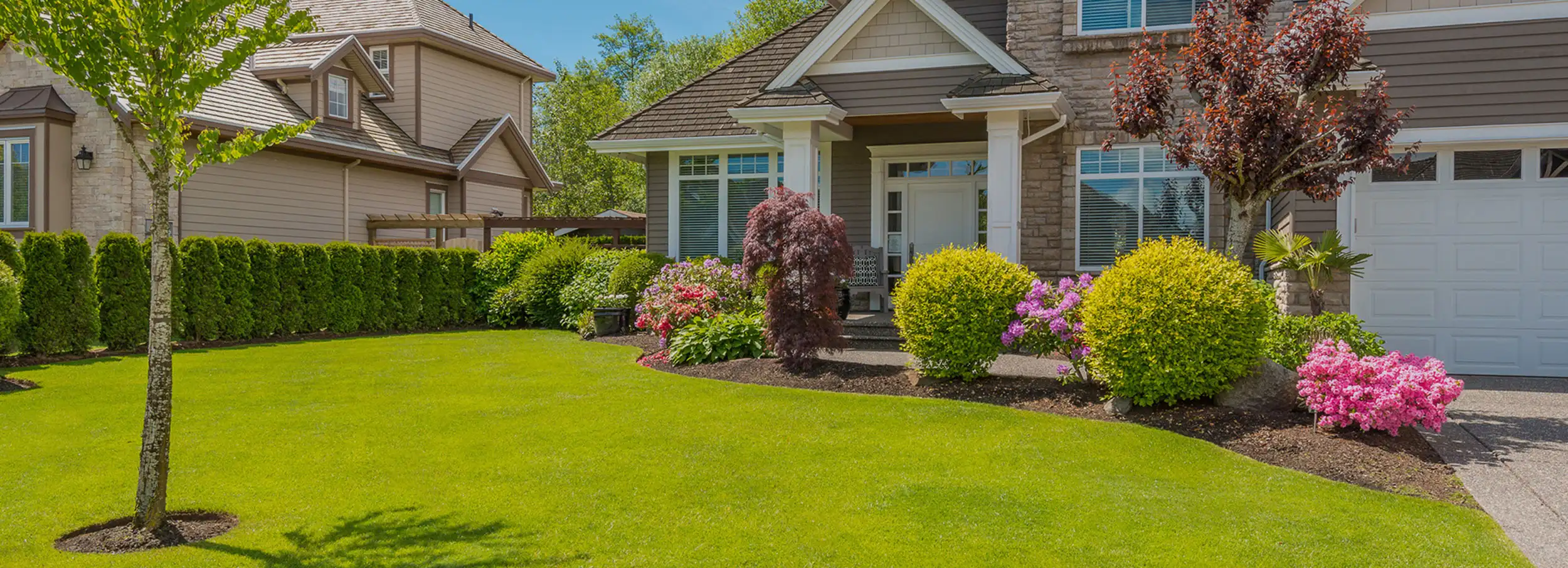Elevate Your Residential property's Aesthetic With Lasting Landscaping Styles and Eco-Friendly Practices
:max_bytes(150000):strip_icc()/landscaping-on-a-budget-2131962-hero-2c4072b220ee4bd5944c1a4fe816360e.jpg)
Advantages of Sustainable Landscape Design
Applying lasting landscape design practices not only preserves natural sources yet also advertises biodiversity and improves total environmental health. By selecting environmentally friendly landscape design strategies, homeowner can gain a wide variety of advantages that extend beyond simply aesthetic allure. One substantial benefit is the decrease of water usage through making use of drought-resistant plants, rain gardens, and efficient watering systems. This not only reduces energy bills however additionally adds to water preservation efforts in the community.
Moreover, lasting landscaping can boost soil health by lessening using chemical fertilizers and pesticides, therefore developing a much healthier setting for plant development and helpful soil microorganisms. This, subsequently, boosts the total strength of the landscape to endure environmental stressors and environment modification influences - landscaping contractor Jacksonville. Furthermore, lasting landscaping practices can draw in varied wild animals, including pollinators like butterflies and , cultivating a more balanced and vibrant ecosystem within the property
Incorporating Native Plants
To build on the advantages of sustainable landscaping, a critical concentrate on including native plants can further boost environmental durability and promote biodiversity within the landscape. Indigenous plants are types that normally take place in a particular location and have progressed to flourish in the regional climate, dirt problems, and ecosystem. By consisting of indigenous plants in landscape design designs, homeowner can lower water usage, lessen the need for chemical pesticides and plant foods, and support the neighborhood wild animals population.
Including indigenous plants also aids in preserving the distinct personality and identification of a region's vegetation. These plants often need less maintenance when developed, making them a economical and lasting landscape design solution over time. In addition, indigenous plants can draw in indigenous pollinators like bees and butterflies, adding to the general health of the environment.
When picking native plants for landscaping tasks, it is important to choose varieties that are fit to the certain environmental conditions of the website. Consulting with botanical gardens or neighborhood nurseries can give important support on picking the appropriate indigenous plants for a particular area. By incorporating indigenous plants right into landscape design layouts, residential property owners can develop gorgeous, sustainable exterior spaces that profit both the atmosphere and the area.

Water Conservation Techniques
Efficient irrigation methods play a vital duty in sustainable landscape design methods, ensuring ideal water conservation initiatives in outside areas. Implementing techniques such as drip watering, rainwater harvesting, and wise irrigation systems can substantially lower water waste while maintaining a healthy and balanced landscape. Trickle watering supplies water straight to the roots of plants, reducing dissipation and overflow. Rainwater collecting entails gathering rain here from roofing systems and storing it for later usage in irrigation, decreasing the reliance on community water resources. Smart watering systems utilize weather data and soil wetness levels to change sprinkling schedules, avoiding overwatering and advertising water effectiveness.
Along with advanced irrigation techniques, xeriscaping is an additional water-saving landscaping technique that concentrates on making use of drought-resistant plants, compost, and effective watering to develop a low-water landscape design - landscaping company Jacksonville. By choosing native plants that are appropriate to the local climate and soil problems, homeowner can minimize the need for too much watering, eventually saving water and advertising a sustainable exterior environment
Eco-Friendly Hardscaping Ideas
Enhancing outdoor rooms with environment-friendly hardscaping attributes can contribute substantially to lasting landscape design practices. When considering hardscaping components, opt for products like recovered timber, recycled concrete, or natural rock to reduce environmental effect. These products not just add an one-of-a-kind visual attract your exterior space yet likewise decrease the requirement for new sources removal.
Carrying out absorptive leading alternatives such as crushed rock or permeable concrete can assist reduce water overflow and advertise groundwater recharge. These alternatives enable rain to permeate right into the ground, preventing disintegration and reducing the burden on stormwater systems.
Incorporating native plants into hardscaping designs can additionally boost eco-friendliness by sustaining local wildlife and minimizing the requirement for too much watering or chemical therapies. By incorporating environment-friendly wall surfaces or vertical look these up gardens, you can introduce much more vegetation into city setups, improving air top quality and biodiversity.
Integrating energy-efficient illumination, such as solar-powered LEDs, into hardscaping designs can reduce electrical energy intake and reduced your building's carbon footprint. Focusing on eco-friendly hardscaping ideas not only improves the charm of your exterior space but likewise demonstrates a commitment to environmental stewardship.
Maintenance Tips for Lasting Landscapes

Routinely trim plants to advertise healthy and balanced development and stop overgrowth that can lead to pest illness or infestations. Usage natural fertilizers to nurture the dirt and plants without dangerous chemicals that can leach right into the setting.
Conclusion
Finally, sustainable landscape design techniques supply many advantages for click for more homeowner, from boosting the aesthetic appeal of the surroundings to promoting environmental preservation. By integrating indigenous plants, executing water conservation methods, and making use of environment-friendly hardscaping ideas, property owners can create gorgeous landscapes that are also ecologically accountable. With proper maintenance, lasting landscapes can thrive and contribute to a healthier ecosystem for both humans and wild animals.
In addition, sustainable landscaping can boost soil wellness by lessening the usage of chemical plant foods and pesticides, consequently creating a much healthier atmosphere for plant growth and advantageous soil microorganisms.To construct upon the benefits of sustainable landscaping, a calculated emphasis on incorporating indigenous plants can better improve environmental resilience and advertise biodiversity within the landscape. By including native plants in landscaping styles, building proprietors can minimize water usage, decrease the requirement for chemical pesticides and plant foods, and support the regional wild animals populace.
These plants often require less maintenance as soon as established, making them a sustainable and economical landscaping option in the long run. By integrating indigenous plants right into landscaping styles, residential property proprietors can create lovely, lasting outdoor rooms that benefit both the area and the atmosphere.